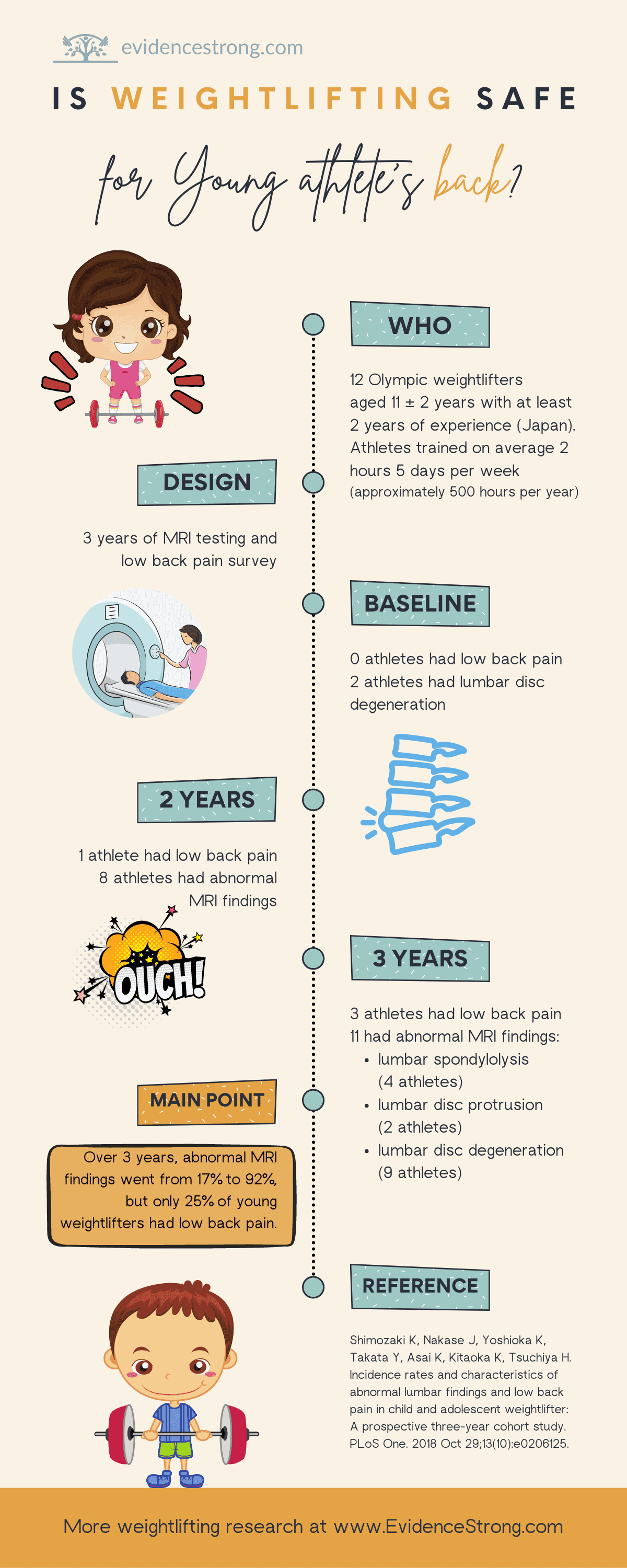Summary of a study investigating lower backs of young Olympic weightlifters over 3 years.
Who
12 (6 females, 6 males) Olympic weightlifters aged 11.4±2.0 years with at least 2 years of experience (Japan).
Design
3 years of surveys and lumbar MRI examination (anually).
Outcome measures
- low back pain (pain for more than one week that prevented weightlifting practice)
- MRI abnormalities of lumbar (lower back) vertebrae (L1 to S1)
Main results
- athletes trained on average 2 hours per day, 5 days per week (approximately 500 hours per year)
- Out of 12 weightlifters:
- at baseline, only 2 had lumbar disc degeneration detected on MRI.
- after 2 years, there was 1 athlete had low back pain, and 8 athletes with abnormal MRI findings.
- after 3 years, 3 athletes had low back pain and 11 had abnormal MRI findings:
- lumbar (lower back) spondylolysis - 4 athletes
- lumbar disc protrusion - 2 athletes
- lumbar disc degeneration - 9 athletes
- In summary, over 3 years, abnormal MRI findings went from 17% to 92%, but only 25% of young weightlifters (average age 11 years) developed low back pain symptoms. In comparison, abnormal MRI findings are present in about 30% of general population of 15-years-olds.
spondylolysis – a fracture through a part of the lumbar (low back) verterbrae
disc protrusion – a disc bulge that goes into the spinal canal
disc degeneration – anatomical changes and loss of function in the disc. Happens with aging and/or injury
Take home message
Original article
Shimozaki K, Nakase J, Yoshioka K, Takata Y, Asai K, Kitaoka K, Tsuchiya H. Incidence rates and characteristics of abnormal lumbar findings and low back pain in child and adolescent weightlifter: A prospective three-year cohort study. PLoS One. 2018 Oct 29;13(10):e0206125.
You might want to read next
How early can you specialize in weightlifting and still be safe in terms of injuries?
How old are the best athletes in weightlifting and powerlifting?
